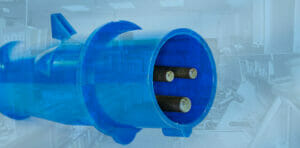In this article, Director of Engineering and Product Development Bhupendra Patel provides insight on operators’ increased focus on energy efficiency and how to evaluate equipment in order to attain efficiency goals.
According to the ENERGY STAR® Guide for Restaurants, restaurants use approximately 5 to 7 times more energy per square foot than other commercial buildings. Furthermore, Pacific Gas & Electric notes that the foodservice industry spends $10 billion on energy, and up to 80 percent of the energy is wasted by inefficient equipment.
With energy costs on the rise — not to mention the significant impact of increasing labor and food costs — operators have to place greater emphasis on driving down the amount of energy their facilities require to operate.
As operators make decisions about energy efficient equipment in their facilities, here are a few considerations to keep in mind.
Think Long-Term
When it comes to energy efficiency, operators cannot be near-sighted. With new, customized equipment that is more energy efficient, the initial purchase cost may be higher, but the ROI over time is less. Antunes works with customers to help them understand the total cost of ownership for the piece of equipment, and in many cases the costs are recouped within a year or two — when the equipment is properly maintained.
Evaluate Replacement Opportunities
Operations using older equipment are not seeing the benefits of a newer generation of equipment that has been designed to address energy efficiency. These product improvements can include consuming less energy in idle states, using less energy when operating and emitting less heat. The advantages of investing in a new, customized piece of equipment likely offset the perceived benefits from keeping the current piece of equipment.
Consider the Entire Operation
As operators seek to reduce costs through energy efficient equipment, they should also consider the impact on the entire operation. For example, equipment that gives off a lot of heat wastes energy and makes HVAC systems work harder, but efficient equipment can result in overall operational savings.
Assess Operational Practices
In addition to the energy savings inherently found in the piece of equipment, there are actions operators and their employees can take to reduce energy consumption:
· Implement a start-up and shut-down schedule to avoid equipment ‘idling’
· Perform regular maintenance to keep equipment running at peak efficiency
· Utilize energy efficient equipment to cook, such as an egg station instead of a grill
Antunes works with customers to understand the challenges they are facing and their energy efficiency goals. Using manufacturing data and knowledge of equipment — as well as a deep understanding of the industry — we can help the operators achieve energy efficiency through customized, quality solutions.
See how Antunes helped a leading hamburger chain achieve greater energy efficiency with a new toasting solution in this case study.


 How Water Treatment Systems Save Operations Money
How Water Treatment Systems Save Operations Money